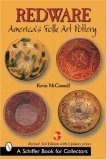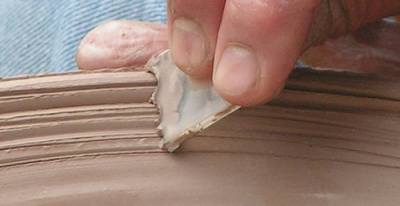-
History of:
- Resources about:
- More:
- Baby walkers
- Bakehouses
- Bed warmers
- Beer, ale mullers
- Besoms, broom-making
- Box, cabinet, and press beds
- Butter crocks, coolers
- Candle snuffers, tallow
- Clothes horses, airers
- Cooking on a peat fire
- Drying grounds
- Enamel cookware
- Fireplaces
- Irons for frills & ruffles
- Knitting sheaths, belts
- Laundry starch
- Log cabin beds
- Lye and chamber-lye
- Mangles
- Marseilles quilts
- Medieval beds
- Rag rugs
- Rushlights, dips & nips
- Straw mattresses
- Sugar cutters - nips & tongs
- Tablecloths
- Tinderboxes
- Washing bats and beetles
- Washing dollies
- List of all articles
Subscribe to RSS feed or get email updates.
Everyday domestic pottery - US & UK traditions - resources
American redware and earthenware
Books on US redware and earthenware:
Redware: America's Folk Art Pottery
American Redware
Central Pennsylvania Redware Pottery, 1780-1904
From Mud to Jug: The Folk Potters and Pottery of Northeast Georgia
Norton Stoneware and American Redware: The Bennington Museum Collection
Slipped and Glazed: Regional American Redware
- Online exhibition explaining redware techniques
- Virginia and Tennessee earthenware and potters
- Redware from Huntington, NY
- Sheffield Historical Society
- Vermont earthenware
- Pennsylvania redware
- 1930 redware jug
- Slip-decorated redware
North American pottery - mixed
- Canadian pottery
- Pottery from the Index of American Design at the National Gallery of Art
- Identifying fragments found in Illinois
- Early Wisconsin stoneware and earthenware
- Early American earthenware from Jamestown, with 17th C European pottery
- Pottery found at Jamestown
- Southern pottery
- Jugtown, Illinois - 19th C pottery production
- Akron, Ohio - local pottery in the 19th C, included in company history (pdf)
American salt-glazed stoneware >>>>
UK redware
English Border Ware
Crockery - Brown earthen pans are said to be best for milk and for cooking. Tin pans are lighter, and more convenient, but are too cold for many purposes. Tall earthen jars, with covers, are good to hold butter, salt, lard, etc. Acids should never be put into the red earthen ware, as there is a poisonous ingredient in the glazing which the acid takes off. Stone ware is better and stronger, and safer every way than any other kind.
Catharine E. Beecher and Harriet Beecher Stowe, The American Woman's Home, 1869
A Nottingham-ware pot, with a lid, to hold a gallon or two, is very useful; especially if you have an oven: it does well to make a stew or soup, on which I shall give you a hint presently.
Esther Copley, Cottage Comforts, 1841
General UK household pottery resources
- Devon and other pottery (scroll down and click on photos)
- Welsh pottery
- Bristol pottery
English stoneware
UK tin-glazed pottery, English delftware
Glossary of pottery terms
>>>> American redware - rare beauty from red clay?
You may like our new sister site Home Things Past where you'll find articles about antiques, vintage kitchen stuff, crafts, and other things to do with home life in the past. There's space for comments and discussion too. Please do take a look and add your thoughts. (Comments don't appear instantly.)
For sources please refer to the books page, and/or the excerpts quoted on the pages of this website, and note that many links lead to museum sites. Feel free to ask if you're looking for a specific reference - feedback is always welcome anyway. Unfortunately, it's not possible to help you with queries about prices or valuation.




